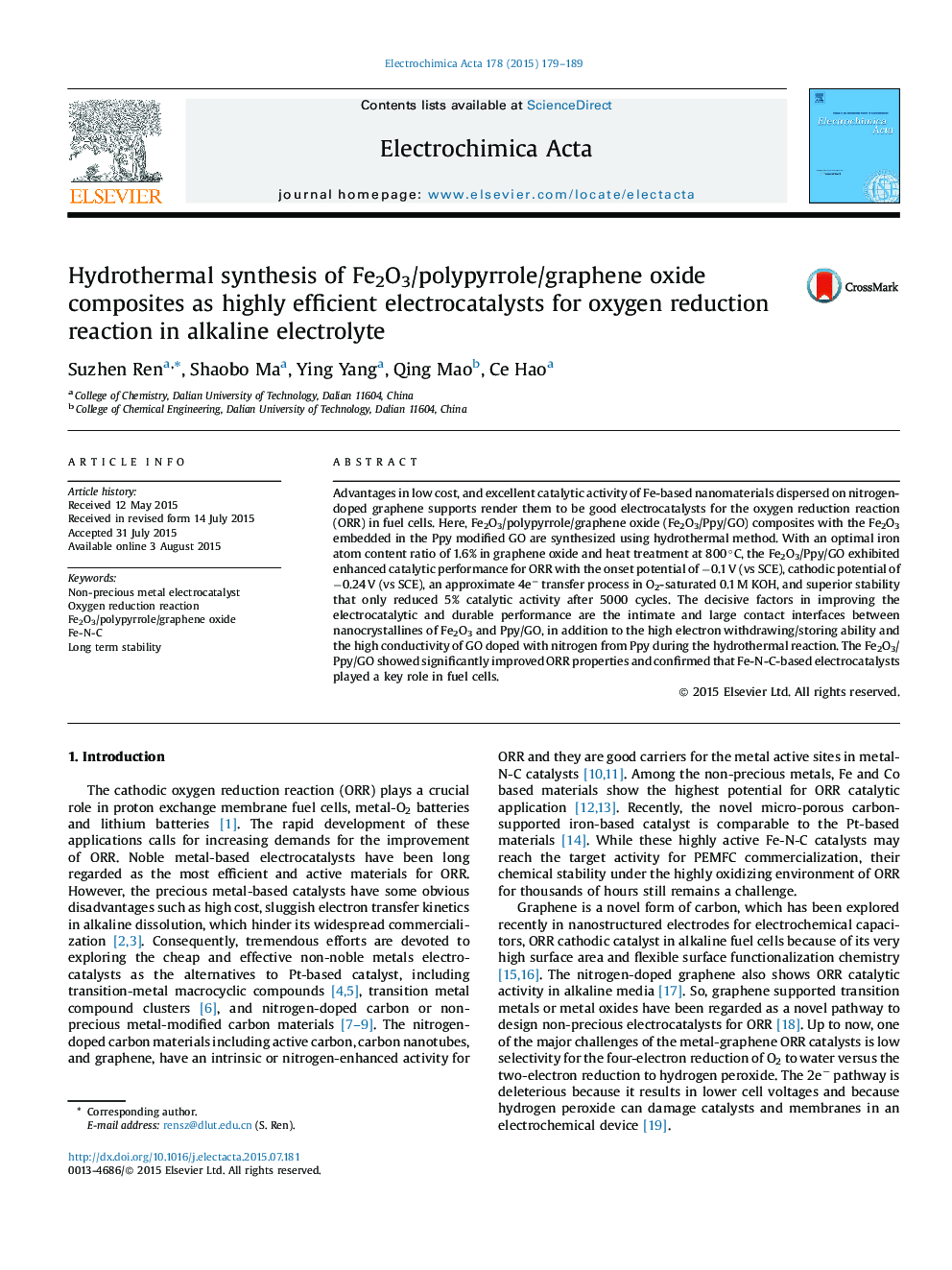| Article ID | Journal | Published Year | Pages | File Type |
|---|---|---|---|---|
| 183672 | Electrochimica Acta | 2015 | 11 Pages |
Advantages in low cost, and excellent catalytic activity of Fe-based nanomaterials dispersed on nitrogen-doped graphene supports render them to be good electrocatalysts for the oxygen reduction reaction (ORR) in fuel cells. Here, Fe2O3/polypyrrole/graphene oxide (Fe2O3/Ppy/GO) composites with the Fe2O3 embedded in the Ppy modified GO are synthesized using hydrothermal method. With an optimal iron atom content ratio of 1.6% in graphene oxide and heat treatment at 800 °C, the Fe2O3/Ppy/GO exhibited enhanced catalytic performance for ORR with the onset potential of −0.1 V (vs SCE), cathodic potential of −0.24 V (vs SCE), an approximate 4e− transfer process in O2-saturated 0.1 M KOH, and superior stability that only reduced 5% catalytic activity after 5000 cycles. The decisive factors in improving the electrocatalytic and durable performance are the intimate and large contact interfaces between nanocrystallines of Fe2O3 and Ppy/GO, in addition to the high electron withdrawing/storing ability and the high conductivity of GO doped with nitrogen from Ppy during the hydrothermal reaction. The Fe2O3/Ppy/GO showed significantly improved ORR properties and confirmed that Fe-N-C-based electrocatalysts played a key role in fuel cells.
Graphical abstractFe2O3/polypyrrole/graphene oxide electrocatalysts for oxygen reduction reaction (ORR) are successfully prepared through one simple polypyrrole-assisted hydrothermal method and possess very high ORR activity and are able to selectively reduce O2 to water through the four-electron transfer reaction mechanism in alkaline electrolyte.Figure optionsDownload full-size imageDownload as PowerPoint slide
